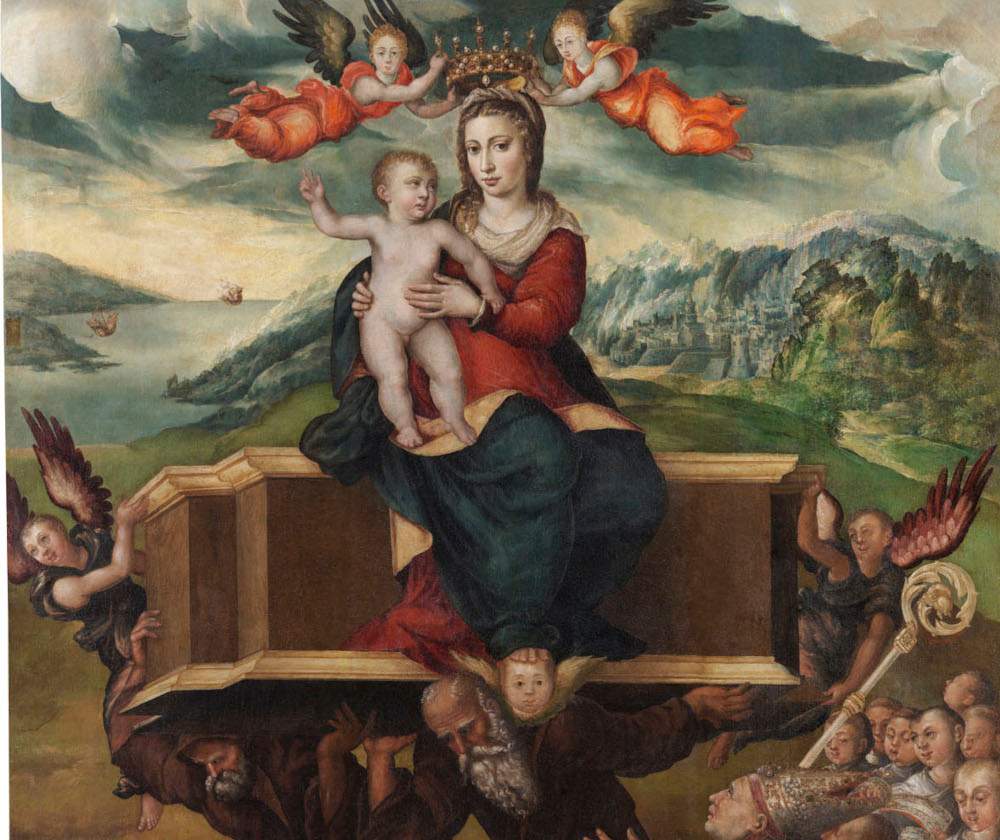An exhibition in Cremona on the Sicilian years of Sofonisba Anguissola and her Madonna dell'Itria
The Ala Ponzone Civic Museum in Cremona welcomes from April 2 to July 3, 2022 the exhibition Sofonisba Anguissola and the Madonna dell’Itria, which aims to present the years spent by the painter in Paternò, starting with a certain work from that period, namely the altarpiece of the Madonna dell’Itria, now kept at the Church of the Annunciata in Paternò.
On May 26, 1573, Sofonisba Anguissola married the Sicilian nobleman Fabrizio Moncada. After years spent at court in Madrid as lady-in-waiting to Queen Isabella and guardian of the infante, the Cremonese painter was welcomed into the small court of Paternò, where she remained until 1579 when her husband died in the course of a pirate attack in the sea of Capri and she decided to return, therefore, to Cremona. In fact she never returned there, overwhelmed by her love for the captain of the ship taking her to Genoa, she stayed for a long time in the Ligurian city before returning once more to Sicily, but this time to Palermo, where she died almost a hundred years old.
In the painting of the Madonna dell’Itria Sofonisba summarizes and updates the iconographic transformations of the Madonna Ogiditria, a model drawn from the Byzantine world and soon transposed to the southern Italian islands and regions following the Greek and Albanian communities that arrived from the Balkans. The popular iconography that initially proposes the half-length Madonna holding the seated Child Jesus in the act of blessing and which the Virgin points to with her right hand is transformed from the 16th century onward into the figuration in which the Virgin towers above a wooden chest carried on the shoulders of two Basilian monks (the calogeri). These refer to the legends concerning the stealing and securing, within a crate, of the miraculous icon that was believed to have been painted by St. Luke himself and had long been considered a protector by the people of Constantinople, before the final catastrophe of 1453. To save her from the destructive fury of the Ottomans, the monks who had her in their custody allegedly entrusted her to the waves and thus she would arrive on the western shores. The cult reserved for Our Lady of Itria therefore achieved great popularity, and during the 16th century churches dedicated to her sprang up in Sicily, and Our Lady of Itria was proclaimed patroness of the island.
On June 25, 1579, the artist, ready to leave the island, donated this work of hers to the Franciscan convent of Paternò, then the burial place of the Moncadas. From there it transited to the Church of the Annunciata.
The exhibition features the fully restored altarpiece alongside other testimonies such as frescoes, paintings on wood and canvas, and sculptures from Sicily, as well as from northern Italy, which allow us to follow the evolution of the iconographic theme from the medieval icon of the Madonna Odigitria to the modern icon of the Madonna dell’Itria.
Once the Cremonese exhibition concludes, the exhibition will be on display from August 12 to December 4, 2022 at the Diocesan Museum in Catania.
 |
| An exhibition in Cremona on the Sicilian years of Sofonisba Anguissola and her Madonna dell'Itria |
Warning: the translation into English of the original Italian article was created using automatic tools. We undertake to review all articles, but we do not guarantee the total absence of inaccuracies in the translation due to the program. You can find the original by clicking on the ITA button. If you find any mistake,please contact us.




























